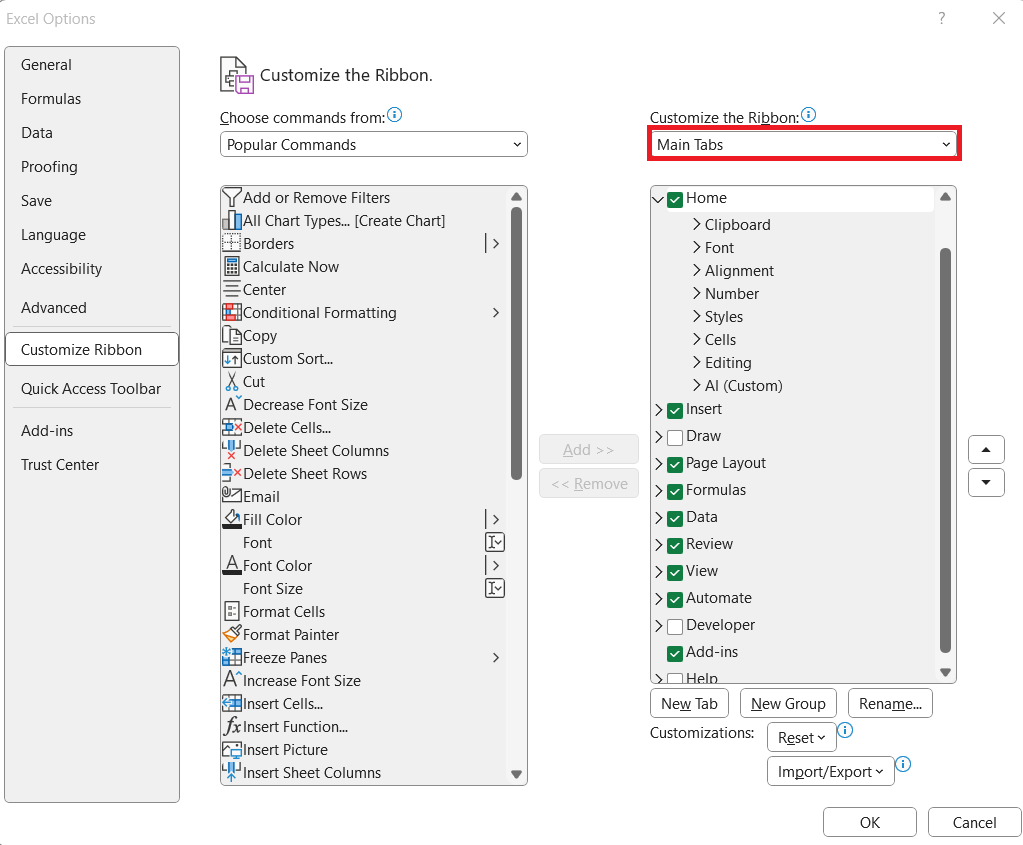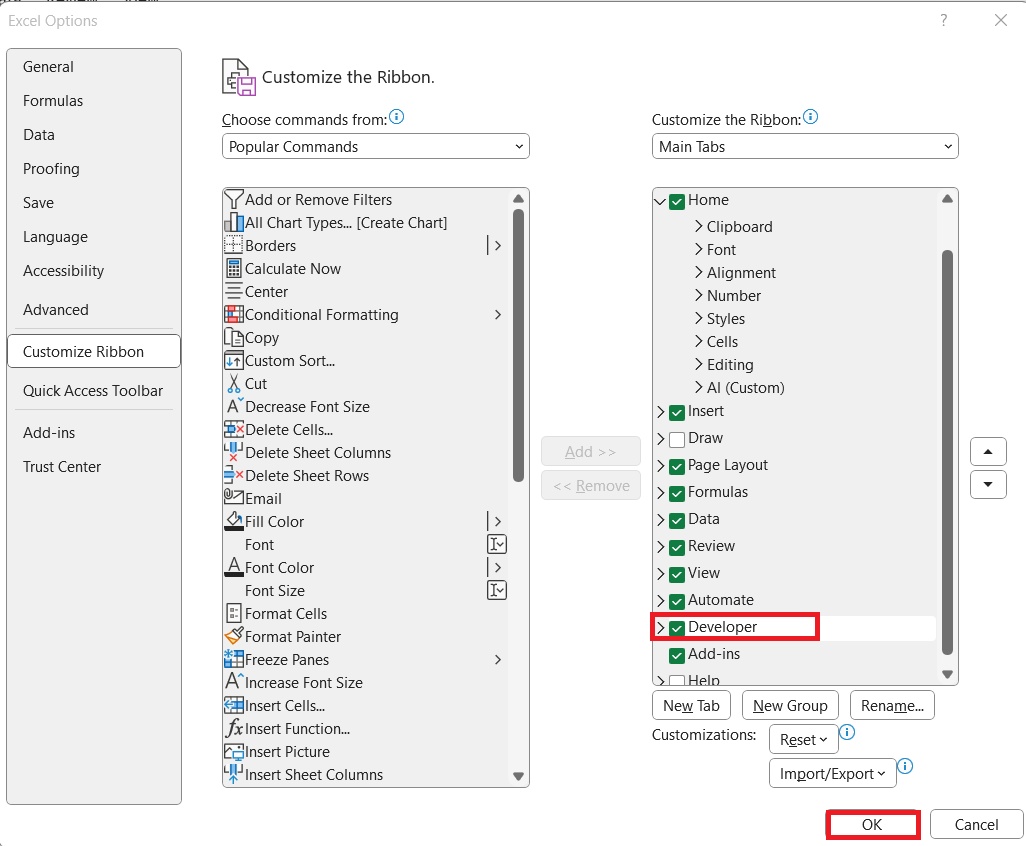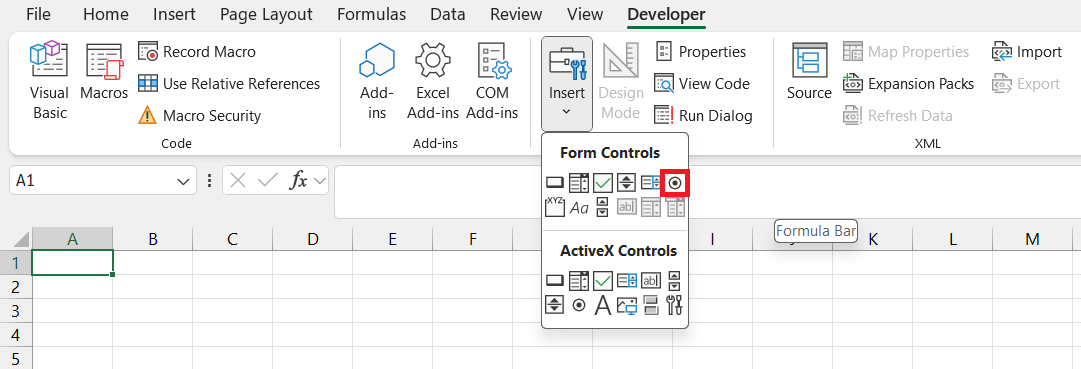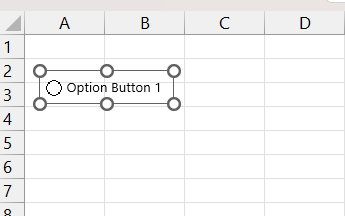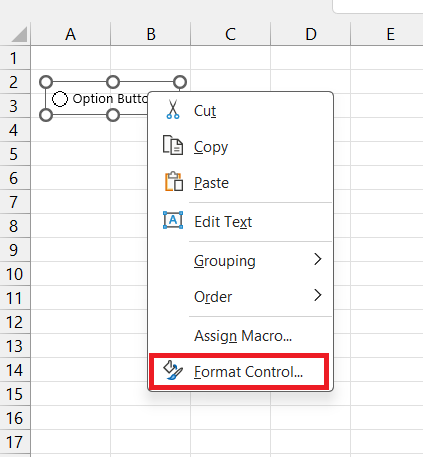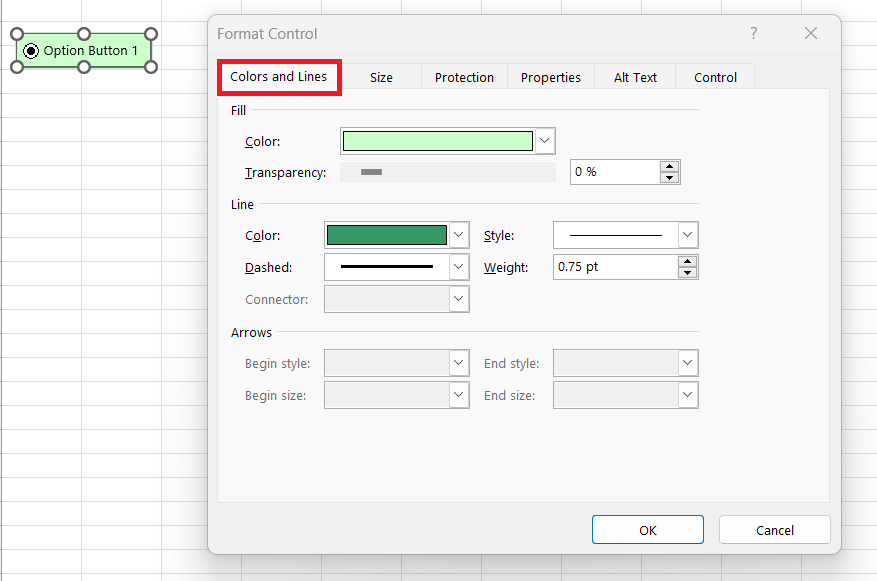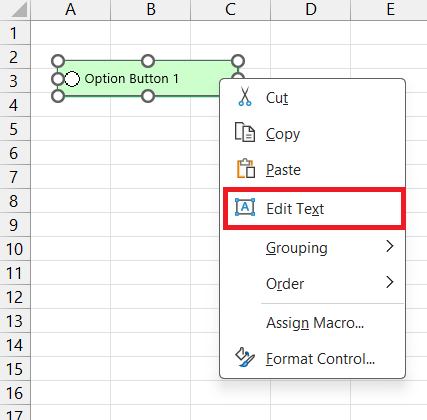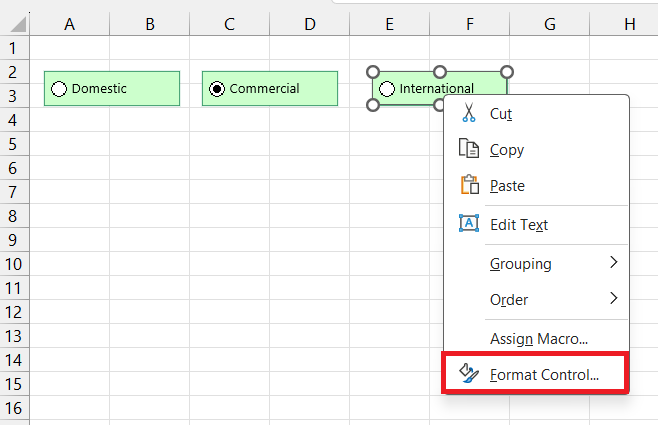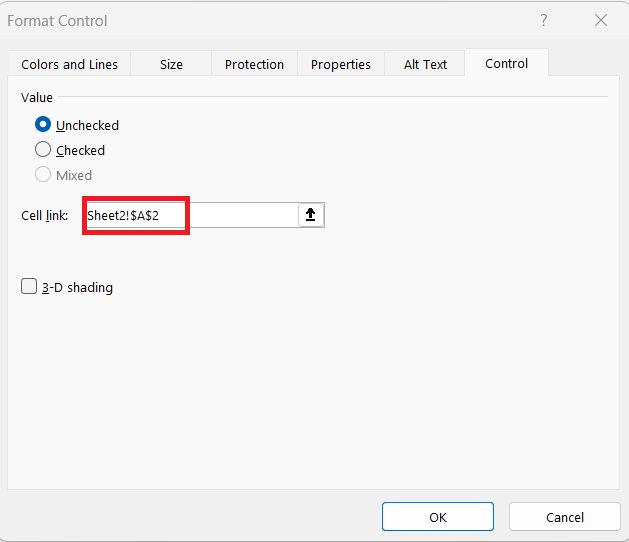When working in Excel, I often need a way to allow users to choose a single option from a list, and that’s where radio buttons come in handy. Radio buttons, also known as option buttons, make it easy to select one item from multiple choices. In this article, I’ll walk you through how to insert and use radio button in Excel to make your Excel sheets more interactive and user-friendly. Let’s dive into the details!
Key Takeaways:
- Simplifies Decision-Making: Radio buttons in Excel allow users to make a single selection from multiple options, making decision processes clearer and more streamlined.
- Interactive Data Collection: These buttons transform static Excel sheets into dynamic forms, improving user interaction and data entry efficiency.
- Easy Setup: Accessing the Developer tab and inserting radio buttons is a straightforward process, involving only a few simple steps.
- Customization Options: Radio buttons can be customized in terms of appearance and function, enhancing both aesthetics and usability in Excel forms.
- Powerful Data Integration: Linking radio buttons to cells enables live data updates, making them highly useful for dashboards and dynamic data analysis.
Table of Contents
Introduction to Radio Buttons in Excel
Unveiling the Functionality of Radio Buttons
In Excel, radio buttons—also known as option buttons—serve a distinct purpose: they provide users the ability to make a single, clear choice among a set of options. This simplicity stands out, especially in scenarios requiring straightforward decisions without the clutter and complexity of multiple selections.
These controls gracefully handle tasks such as polling, user choice-driven processes, and structured data entry.
Enhancing Data Interaction with Radio Buttons
Radio buttons not only bring clarity and simplicity to data collection in Excel, but they also enhance the way users interact with spreadsheets. With their integration, spreadsheets evolve from static tables into dynamic forms that can elegantly capture discrete preferences or choices.
This interactive feature is essential in creating intuitive surveys, application forms, and any document that benefits from streamlined user input. The use of radio buttons often results in more accurate data by preventing multiple selections that could potentially skew analytics or insights.
Getting Started with Radio Button in Excel
Accessing the Developer Tab
Before we can utilize radio buttons, we need to access the Developer tab in Excel, which is not immediately visible in the default ribbon setup. The Developer tab holds the keys to a trove of advanced features, including form controls and interactive elements like radio buttons. To make it visible, perform the following steps:
STEP 1: We should right-click on any existing tab in Excel’s ribbon. From the right-click menu, choose ‘Customize the Ribbon’.
STEP 2: Then, in the Excel Options dialogue box that appears, there’s a section on the right called ‘Main Tabs’.
STEP 3: Here, we simply check the Developer option and click OK to apply changes. The Developer tab will then sit neatly alongside other tabs, ready for use.
The Developer tab will now be visible!
The Basics of Inserting a Radio Button
Once the Developer tab is at our fingertips, inserting a radio button into an Excel worksheet is pretty straightforward. To get started, to the following:
STEP 1: Click on the Developer tab and find the ‘Insert’ dropdown menu in the ‘Controls’ group.
STEP 2: This reveals a collection of Form Controls, among which the radio button—labeled as “Option Button”—is found. Selecting it changes the cursor into a crosshair, allowing us to click and draw the radio button directly onto the worksheet.
STEP 3: Clicking on the sheet places our first radio button, which can then be moved or resized as desired.
Customization and Management of Radio Buttons
Personalizing Radio Button Appearance
Personalizing the appearance of radio buttons in Excel is not only about aesthetic appeal but also about enhancing usability. Although Excel’s built-in options for changing the appearance of form controls are somewhat limited, we can get creative. To modify a radio button, these steps will be helpful:
STEP 1: Right-click on the radio button and select “Format Control”.
STEP 2: From there, navigate to the “Colours and Lines” tab to tinker with the border and filling effects to distinguish it from the standard appearance. For color changes, a commonly used workaround involves employing conditional formatting or overlaying a transparent shape to simulate a color change.
For the radio icon itself, while we can’t change its inherent look, we can adjust its size to ensure it aligns properly with other sheet elements. Moreover, enhancing the label with concise and descriptive text helps users better understand what they’re selecting. Labels should always reflect the choice they represent.
To further customize, right-click on the radio button to rename it from the generic “Option Button #” to something more meaningful.
This can aid in both document management and in writing macros which may interact with the radio buttons later.
Efficiently Managing Multiple Radio Buttons
Managing multiple radio buttons efficiently is key to maintaining a well-organized Excel workbook. If we’re dealing with numerous buttons, it’s crucial to align them neatly and group related options logically.
One practical approach is to copy the first configured radio button and paste it as many times as needed, which preserves the size and style settings across buttons.
The alignment tools in Excel — found under the “Arrange” group in the “Shape Format” tab — can make a world of difference, enabling us to distribute controls evenly and align them with surgical precision.
Dynamic Data with Radio Buttons
Linking Radio Buttons to Cells for Live Data Updates
Linking radio buttons to cells in Excel is where the real power of interactivity comes in, allowing live updates of data as choices are made. Each radio button is assigned a unique identifier—usually a sequential number—which then populates a specified cell when that button is selected. This feature is particularly handy for creating dynamic charts, dashboards, or even complicated formulas that respond to user input.
To link a radio button to a cell, I typically follow these steps:
STEP 1: Right-click on the radio button. Select “Format Control” from the menu.
STEP 2: Click on the “Control” tab within the dialogue box. In the “Cell link” box, click the corresponding cell on the sheet that I want to use.
Once set up, I test the setup to ensure that selecting different radio buttons updates the linked cell with unique values in real-time. These values serve as triggers in Excel, capable of initiating changes across the workbook, such as recalculating formulas or adjusting conditional formatting to reflect the new data state.
Incorporating Radio Buttons into Business Analytics
Streamlining Data Collection with Custom Forms
Custom forms designed with radio buttons in Excel can significantly streamline data collection. By crafting a user-friendly interface, I ensure participants can swiftly provide information without ambiguity, enhancing the accuracy and reliability of the collected data. For instance, imagine creating a customer feedback form. Utilizing radio buttons for satisfaction ratings simplifies respondents’ task as they choose from clearly labeled satisfaction levels.
The advantages of effective data collection via custom forms with radio buttons are two-fold: an improved user experience due to straightforward navigation, and on the analytics side, the nonexistence of multi-selection prevents conflicts and eases the analysis workflow. Excel also supports responses aggregation automatically as each radio button is linked to a specific cell, rendering manual compilation obsolete.
By harnessing the power of form controls like radio buttons, I can transform tiresome data collection into a seamless, automated process with Excel acting as both the interface and the analytic tool.
Transforming Analysis with Radio Button-assisted Dashboards
Radio button-assisted dashboards in Excel take data analysis to the next level, allowing for an intuitive and immediate examination of different data sets or scenarios with just a click. In creating such dashboards, I use radio buttons to control which data or metrics are actively displayed, thereby equipping users with the ability to compare various outcomes or insights without altering the underlying dataset.
This transformative approach offers stakeholders or team members the flexibility to switch between Key Performance Indicators (KPIs), financial forecasts, or market analysis perspectives in a dynamic and interactive manner. As a result, the dashboard becomes a potent tool for decision-making, providing tailored insights at the flick of a radio button.
By marrying these agile analytical capabilities with the clarity and simplicity of radio buttons, Excel dashboards take on a facilitative role in business strategy and operations.
FAQ
What is a radio button in Excel (options button)?
A radio button in Excel, also called an “Option” button, is a form control that lets a user select one option from a group of choices. It’s represented by a small, circular button that, when clicked, is filled with a dot, indicating the selection. Only one radio button in a group can be selected at a time, making it ideal for mutually exclusive choices in forms or surveys.
How do I insert radio buttons into an Excel spreadsheet?
To insert radio buttons in an Excel spreadsheet, you need to access the Developer Tab. From there, select ‘Insert’, then ‘Form Controls’, and click on the radio button. Draw it on the sheet where you want it placed. Repeat this process for multiple radio buttons, ensuring they’re linked to the appropriate cells if necessary.
Can I link a chart title to a radio button in Excel?
Yes, you can link a chart title to a radio button in Excel. By setting up a cell to be updated based on the radio button selection and then referring the chart title to that cell, the title can dynamically change to match the selected option from the radio buttons.
What should I do if my radio buttons are not working as expected?
If your radio buttons in Excel aren’t working as expected, check that they’re correctly grouped and each button is linked to a unique cell. Also, look for conflicts with macros running in the background. As a last resort, delete and reinsert the radio buttons for a fresh start.
What if we have 10 questions in a survey and 4 options for each question?
For a survey with 10 questions each having 4 options, create 10 separate groups of radio buttons, one group per question. Each group’s buttons should be linked to a distinct cell to record individual answers, ensuring clean data for easy analysis and interpretation.
John Michaloudis is a former accountant and finance analyst at General Electric, a Microsoft MVP since 2020, an Amazon #1 bestselling author of 4 Microsoft Excel books and teacher of Microsoft Excel & Office over at his flagship MyExcelOnline Academy Online Course.


